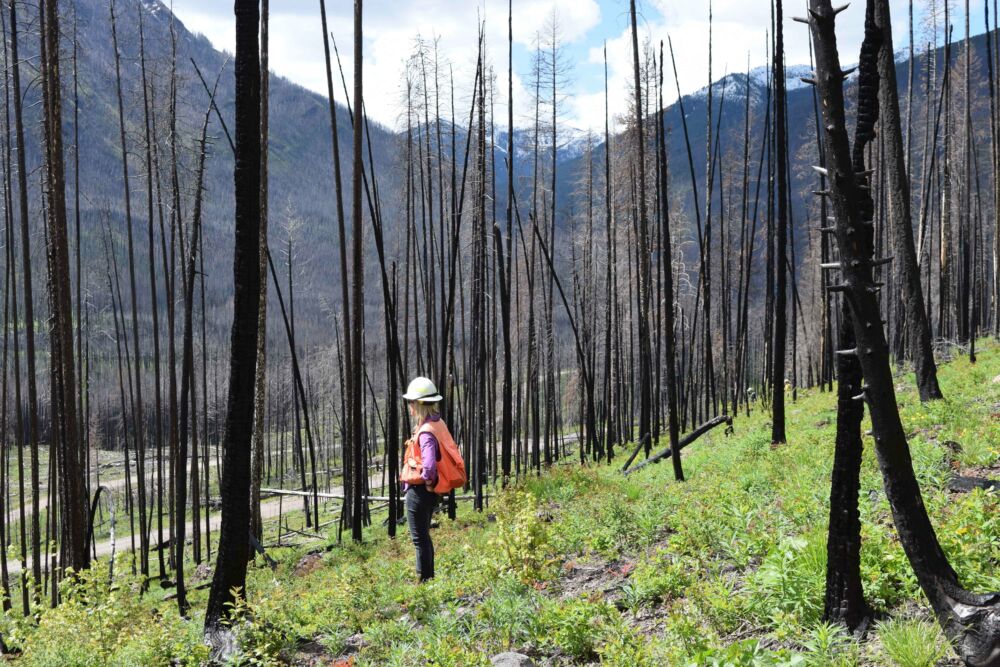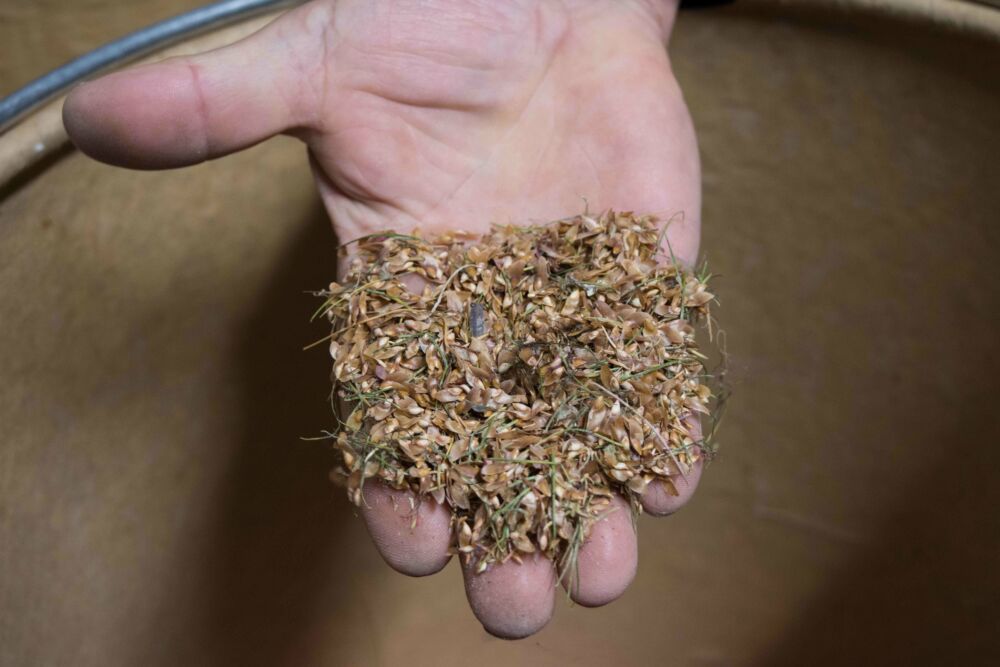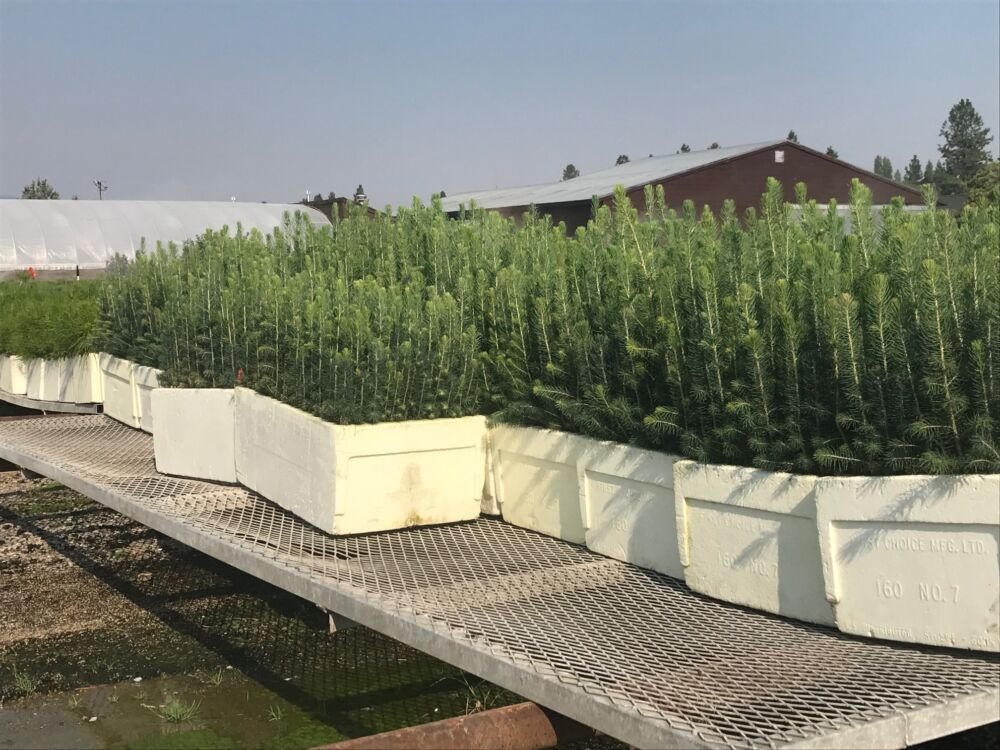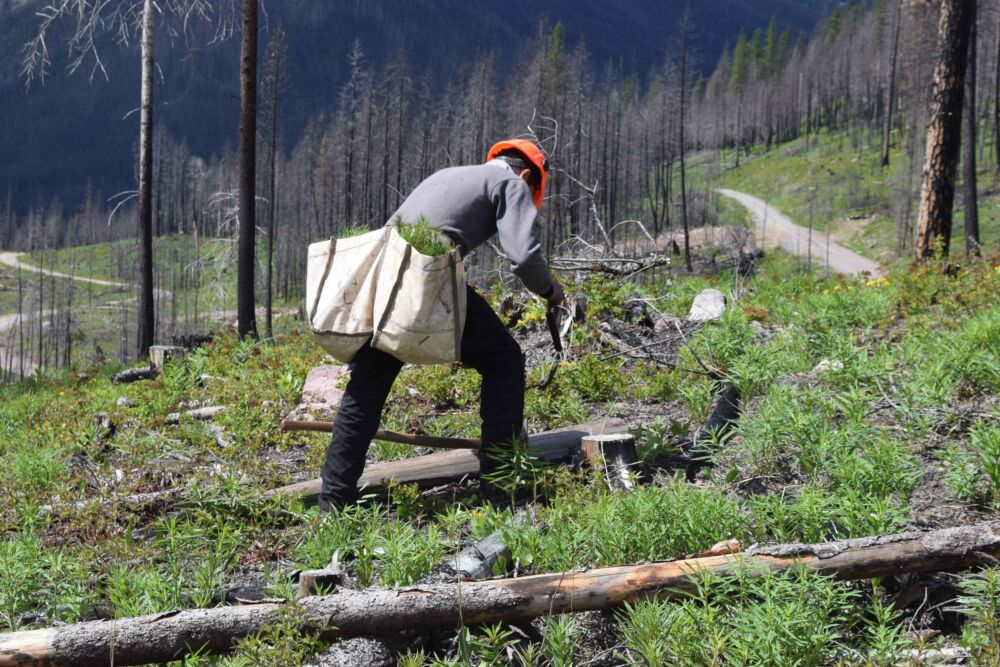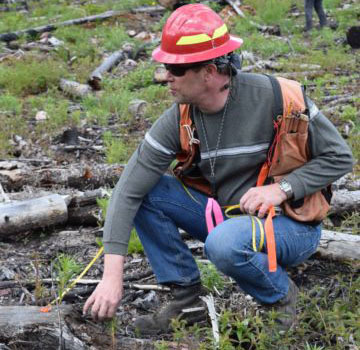The Forest Service then transports the seedlings back to the forest in a refrigerated cooler until the morning that they are planted. Professional tree planting crews fill up their hip bags with hundreds of seedlings at once, and trek across hillsides to plant seedlings.
To give a better chance at survival, seedlings are often planted in what are called “microsites” – tucked in shaded areas that protect the seedling from direct sun exposure and offer more soil moisture.
Using specialized tools, planters dig a small, deep hole in the ground. Seedlings are carefully placed in the hole, making sure the root structure is intact and covering the opening with soil.


